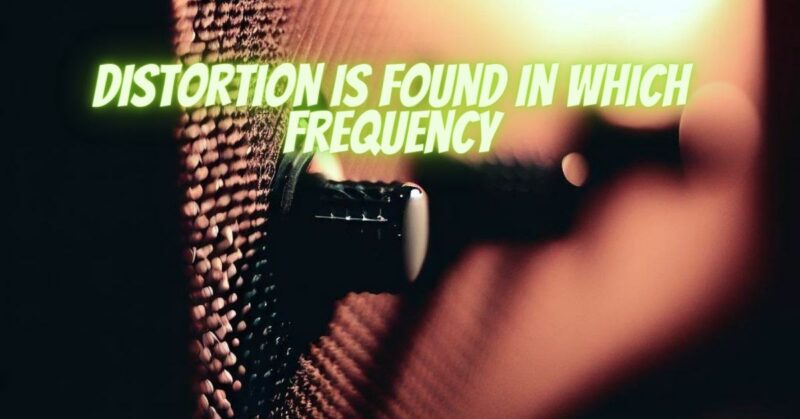Distortion is an undesirable alteration of an audio signal that affects its quality and fidelity. It can occur at various stages of the audio signal chain, including during recording, processing, and playback. In this article, we will explore the frequency range where distortion commonly occurs and discuss the different types of distortion that can affect audio signals.
Distortion and its Frequency Range:
Distortion can manifest in different forms, such as harmonic distortion, intermodulation distortion, and nonlinear distortion. Each type of distortion has its own characteristic frequency range where it tends to occur.
- Harmonic Distortion: Harmonic distortion is the most common type of distortion and refers to the presence of unwanted harmonics in the audio signal. Harmonics are multiples of the original signal frequency. In general, harmonic distortion is more prevalent in the midrange and higher frequencies. It often occurs due to nonlinearities in amplifiers, speakers, or other audio components.
- Intermodulation Distortion: Intermodulation distortion (IMD) occurs when two or more frequencies interact and produce additional frequencies known as intermodulation products. IMD can create new spectral components that were not present in the original signal. The frequency range affected by intermodulation distortion depends on the frequencies and amplitudes of the interacting signals.
- Nonlinear Distortion: Nonlinear distortion encompasses a broader category of distortions that result from nonlinear behavior in audio systems. This can include phenomena like clipping, where the amplitude of the signal exceeds the system’s capabilities, leading to a distorted output. Nonlinear distortion can affect the entire frequency spectrum, depending on the characteristics of the audio system and the input signal.
Addressing Distortion:
Reducing or eliminating distortion is crucial for achieving high-quality audio reproduction. Here are a few steps to address distortion:
- Quality Audio Components: Using high-quality audio components, such as amplifiers, speakers, and recording equipment, can minimize distortion. Well-designed components with low levels of nonlinearities and accurate frequency response help preserve the integrity of the audio signal.
- Calibration and Setup: Proper calibration and setup of audio systems can optimize performance and minimize distortion. This includes setting appropriate gain levels, avoiding signal clipping, and optimizing speaker placement.
- Signal Processing: Utilizing signal processing tools like equalizers and dynamic range compressors can help mitigate distortion issues. These tools can shape the frequency response and control dynamic peaks, reducing the likelihood of distortion.
Conclusion:
Distortion can occur at various frequencies depending on the type of distortion and the characteristics of the audio system. Harmonic distortion is commonly found in the midrange and higher frequencies, while intermodulation distortion and nonlinear distortion can affect the entire frequency spectrum.
By understanding the frequency range where distortion is more likely to occur, audio enthusiasts, engineers, and musicians can take appropriate measures to minimize distortion and preserve the integrity of the audio signal. Utilizing high-quality components, proper calibration, and signal processing techniques are essential steps towards achieving distortion-free audio reproduction and ensuring an enjoyable listening experience.


